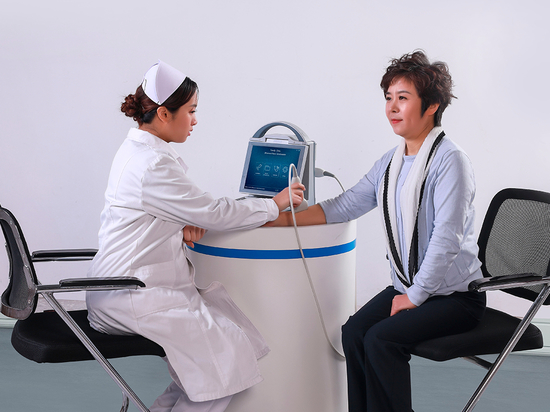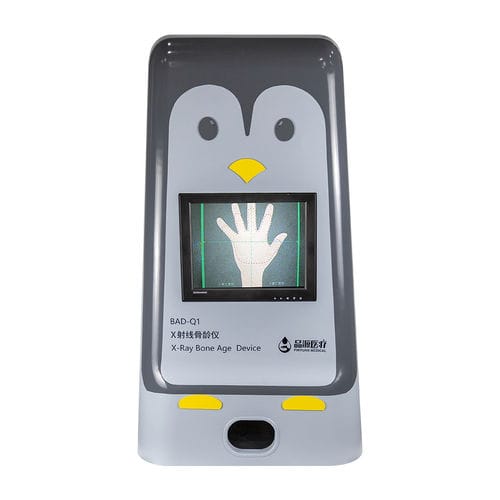
#Industry News
Analysis of bone age: The reason of selecting weak hand by bone rheometer and the method of bone age management
Bone age is known as the "golden indicator of growth and development", which can reveal the true progress of bone maturity in children and help doctors and parents manage their children's health more scientifically.
Does your child need intervention if he is shorter than his peers? Is puberty normal? How to scientifically evaluate the potential of athlete selection? Behind these problems, there is an important medical test - bone age test.
Bone age is known as the "golden indicator of growth and development", which can reveal the true progress of bone maturity in children and help doctors and parents manage their children's health more scientifically. Today, we will take you to a comprehensive understanding of the mystery of bone age detection.
First,What is bone age?
Bone Age is short for bone age and is determined by assessing the degree of bone development in a child's hand or wrist. Bone maturity is closely related to human hormone levels, nutritional status, genetics and other factors, so bone age can more accurately reflect an individual's biological age, rather than actual age (life age).
Second, why choose non-dominant hand (weak hand) for bone age detection?
The non-dominant hand, also known as the weak hand, generally refers to the hand that is relatively not used in daily life. For most people, if they are used to using the right hand for daily activities such as writing and holding chopsticks, the left hand is the weak hand; On the contrary, if you are used to the left hand, the right hand is the weak hand. Of course, there are very few people who use their hands equally frequently, in which case the hand for bone age testing can be selected according to the specific situation or according to the general practice of the testing institution.
The main reasons are:
1. Frequency of use and damage: Non-dominant hand has a relatively low frequency of use in daily life and suffers less damage, wear and tear than dominant hand. The growth and development of bone can better represent the natural physiological process and be less interfered by external factors, and the test results can more accurately reflect the true bone age.
2. Clear image and accuracy of interpretation: Due to the relatively small amount of activity of the non-dominant hand, it is easier to maintain a stable posture during imaging examination, and the image images taken are clearer and complete, which is conducive to the observation and analysis of bone morphology and structure by doctors or professionals, and improve the accuracy of bone age interpretation.
3. Standard consistency: In the research and practice of bone age detection, a uniform norm and database with non-dominant hand as the standard have been formed. The use of non-dominant hand is convenient for comparison and reference with a large number of existing standard data and research results, so that the detection results are more comparable and reliable.
3. 3 questions you must be concerned about bone age measurement
Third, Why is the bone age result inconsistent with age?
The difference between bone age and actual age is within the normal range of ±1 year. If the difference is too large, it should be combined with family genetics, nutritional status and hormone levels, rather than judging the problem by bone age alone.
2. Can bone age predict height? Is that accurate?
The prediction of height by bone age has scientific basis (such as TW3 method and China 05 method), but it is also necessary to consider genetic, environmental, disease and other factors that will affect the final height.
3. Does bone age lag require treatment?
If bone age is lagging with slow growth rate (such as annual growth of <5 cm), pathological factors should be investigated; If the growth rate is normal, it may be "late growth" and need to be monitored regularly.
Forth,How to scientifically manage the child's bone age?
Balanced nutrition: Avoid high-sugar and high-fat diet to prevent obesity from accelerating bone age;
Reasonable exercise: vertical exercise such as jumping rope and basketball can help bone health;
Regular work and rest: ensure deep sleep, promote growth hormone secretion;
Periodic monitoring: Bone age was measured every 6-12 months and changes were observed dynamically.
Bone age testing is like a "developmental scale" to help parents and doctors clear the fog and scientifically manage the growth of children. However, it is important to remember that bone age is only one part of the health assessment, and if abnormalities are detected, prompt medical attention should be sought, rather than undue anxiety. With scientific interventions and a healthy lifestyle, every child can unlock the growth potential of their genes!






